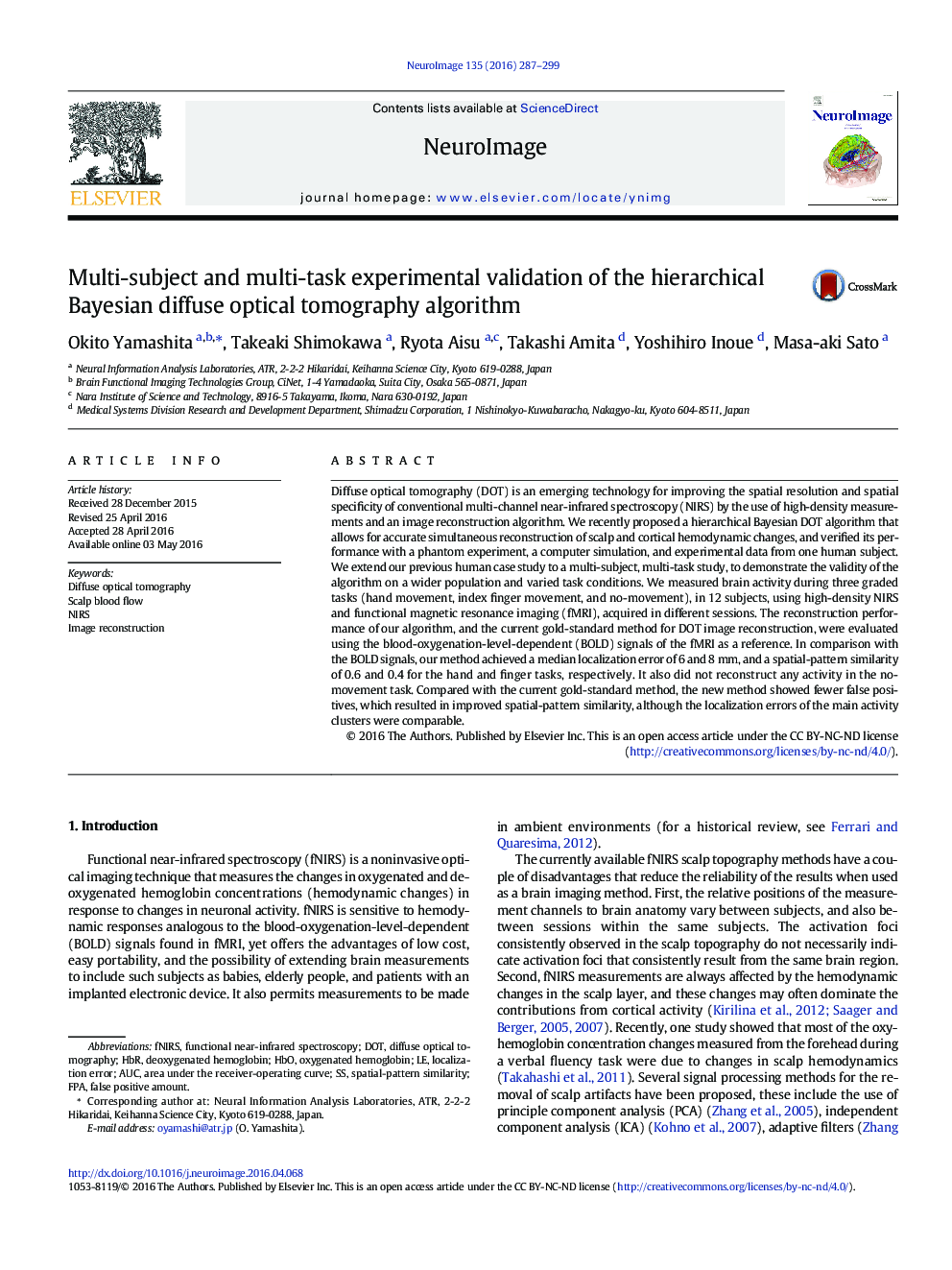| Article ID | Journal | Published Year | Pages | File Type |
|---|---|---|---|---|
| 6023247 | NeuroImage | 2016 | 13 Pages |
Abstract
Diffuse optical tomography (DOT) is an emerging technology for improving the spatial resolution and spatial specificity of conventional multi-channel near-infrared spectroscopy (NIRS) by the use of high-density measurements and an image reconstruction algorithm. We recently proposed a hierarchical Bayesian DOT algorithm that allows for accurate simultaneous reconstruction of scalp and cortical hemodynamic changes, and verified its performance with a phantom experiment, a computer simulation, and experimental data from one human subject. We extend our previous human case study to a multi-subject, multi-task study, to demonstrate the validity of the algorithm on a wider population and varied task conditions. We measured brain activity during three graded tasks (hand movement, index finger movement, and no-movement), in 12 subjects, using high-density NIRS and functional magnetic resonance imaging (fMRI), acquired in different sessions. The reconstruction performance of our algorithm, and the current gold-standard method for DOT image reconstruction, were evaluated using the blood-oxygenation-level-dependent (BOLD) signals of the fMRI as a reference. In comparison with the BOLD signals, our method achieved a median localization error of 6 and 8Â mm, and a spatial-pattern similarity of 0.6 and 0.4 for the hand and finger tasks, respectively. It also did not reconstruct any activity in the no-movement task. Compared with the current gold-standard method, the new method showed fewer false positives, which resulted in improved spatial-pattern similarity, although the localization errors of the main activity clusters were comparable.
Keywords
Related Topics
Life Sciences
Neuroscience
Cognitive Neuroscience
Authors
Okito Yamashita, Takeaki Shimokawa, Ryota Aisu, Takashi Amita, Yoshihiro Inoue, Masa-aki Sato,
